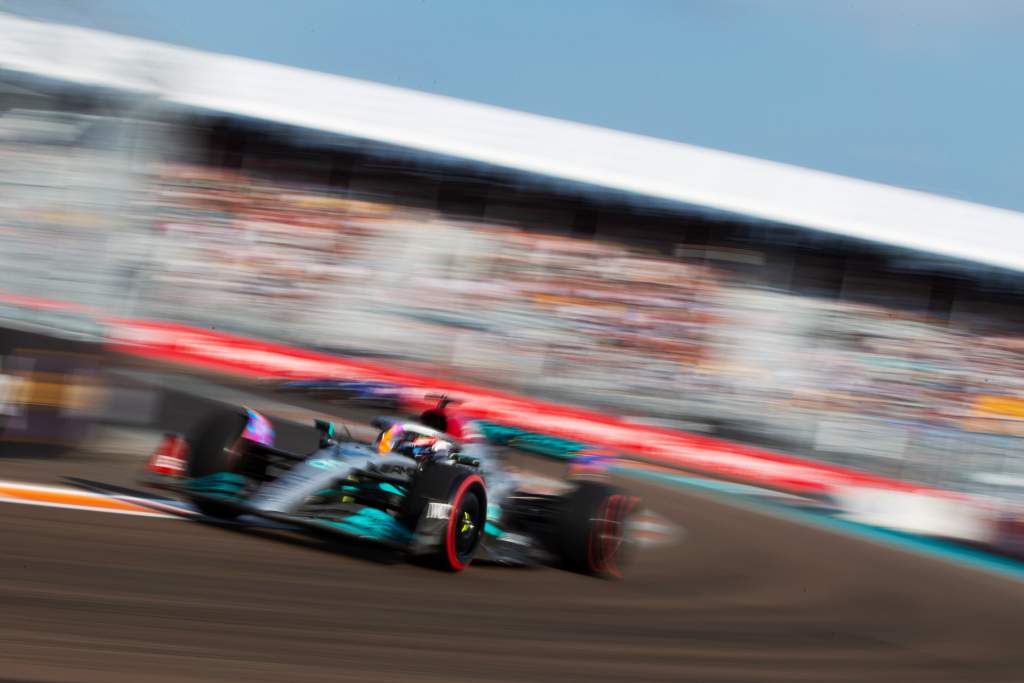Up Next

The big question of the Miami Grand Prix weekend was why during Friday’s FP1 and, in particular, FP2, Mercedes appeared to have got on top of its problems.
After all, it brought a number of upgrades, a new rear wing, new front wing, a new beam wing and potentially other small bits and pieces hidden to the naked eye. It seemed that these changes had made a big difference.
In FP2, George Russell was fastest with Lewis Hamilton fourth – and the Mercedes long run pace was strong. So on face value, it was problem solved. So it should then be about tweaking a few bits on the set-up and getting back to fighting for pole position and race wins.
But it was not so and the concern was that the team and the drivers had no idea why things went well on Friday. Even before coming crashing back down to earth on Saturday, the drivers felt they still had the same problems. But the television footage showed something very different.
In terms of the porpoising, the car looked fairly stable on Friday. But on Saturday, it looked like a bucking bronco. As Russell said, it was a “different beast”.
We have no idea about fuel loads or engine settings, so we can only assume that Mercedes was running its normal weekend practice strategy, which would be in line with the other top teams.
In the end, Charles Leclerc was fastest in Q3 for Ferrari and Mercedes – Hamilton that is – was 0.934% slower. He was closer to the fastest in Q2 at 0.748% off the pace.
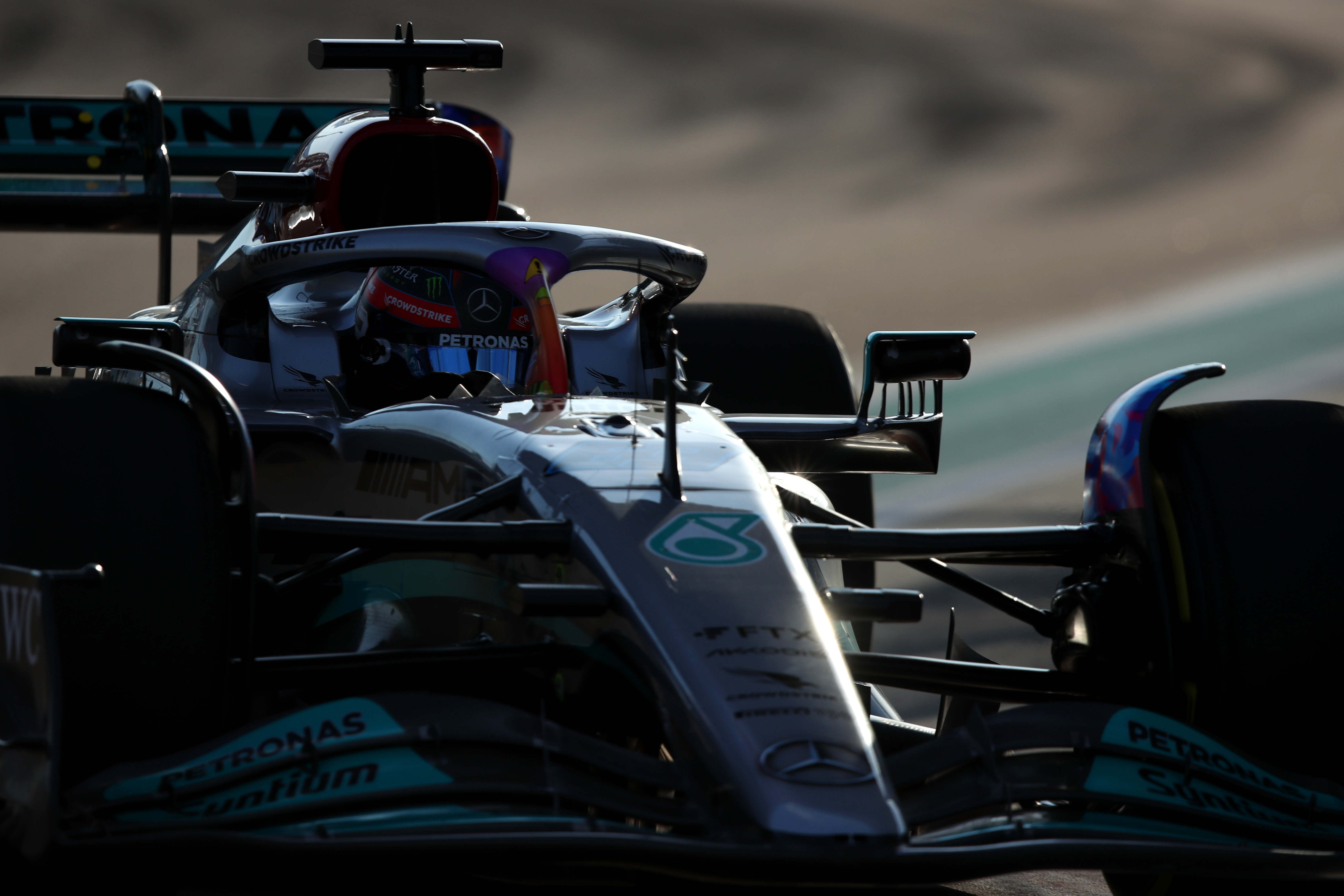
We can compare that to its pace deficit over the first five races of the season.
MERCEDES % PACE DEFICIT 2022
Bahrain +0.541%
Saudi +1.025%
Australia +1.229%
Imola +1.289%
Miami +0.934%
Average +1.003%
There did appear to be a small improvement in Miami. It’s nothing massive, but as far as normal development is concerned the parts Mercedes brought seemed to function as predicted. That’s in keeping with what the team expected from a good package, but one that wasn’t said to be game-changing.
You will never get an answer if you don’t ask the question and doubtless, during the weekend in Miami, there were many questions being asked among the Mercedes engineers. They will continue this week in Brackley.
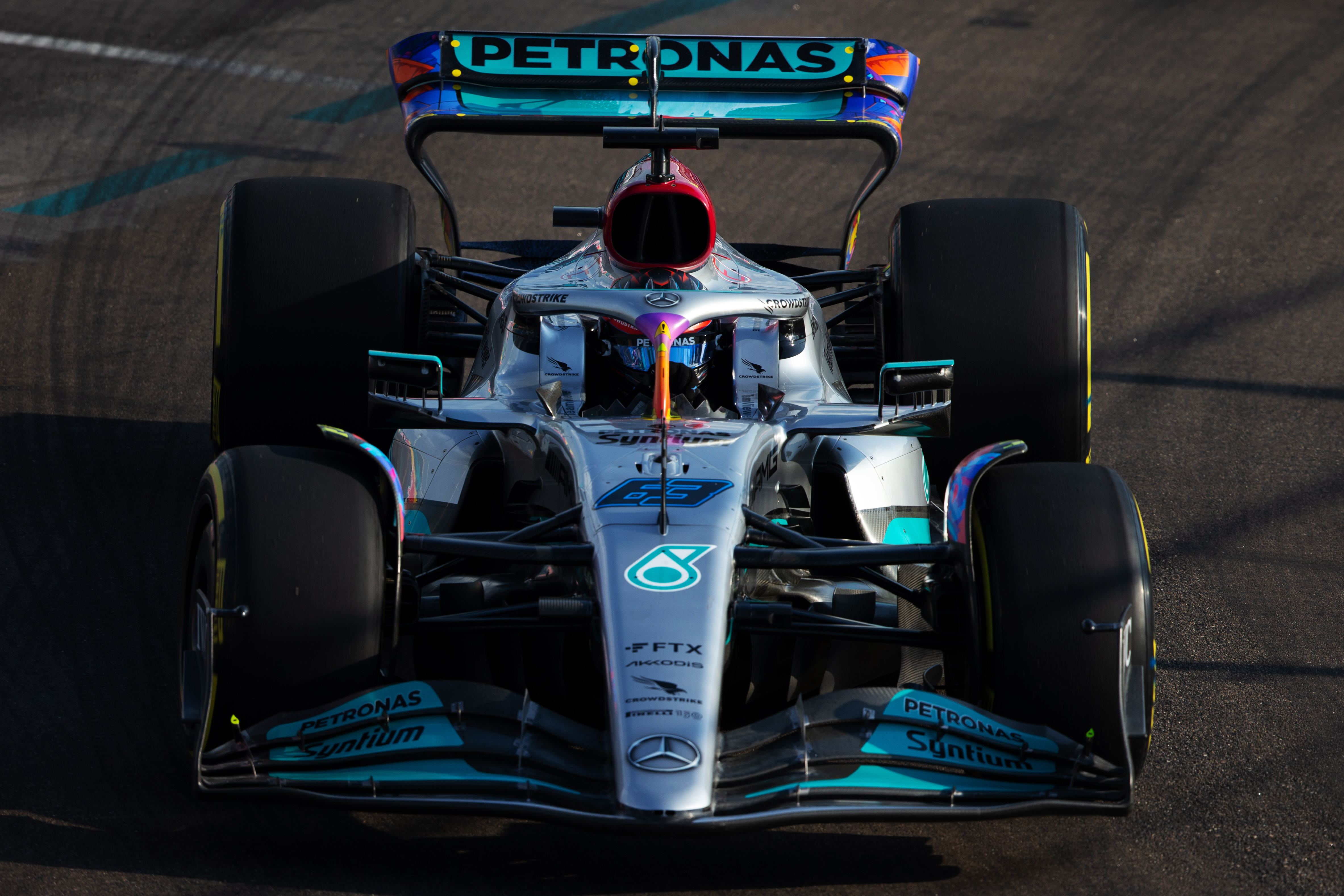
We have also heard on many occasions that Alpine can switch its porpoising on and off so it is a team that has a firm handle on what triggers it. Friday and Saturday proved Mercedes could do the same, but the problem is the team doesn’t understand why. That’s proof that, until the cars run, Mercedes doesn’t know if it will be a good or a bad day.
That’s consistent with what we saw at Imola where Mercedes was surprised by the extent of its porpoising problem and had to switch to an even higher rear ride height than expected. So even a couple of months into the season, every weekend is still full of unknowns.
After the race, Russell suggested that understanding why the Mercedes W13 went so well on Friday compared to the rest of the weekend could be crucial in getting on top of its problems. So what questions should the team be asking as it tries to build its understanding?
The first I would be asking is how much did the cooling requirements get altered between Friday and Saturday?
With its cooling package so compact, I’m sure that as with all the other teams Mercedes came to Miami not expecting the ambient temperatures to be quite so high. All of these cars are optimised in a very narrow cooling window, otherwise you just give away downforce and increase drag needlessly.
So at every track, depending on the predicted ambient temperatures from day to day, the cooling requirement will be optimised. To do this, you would change the exit area to allow you to pull less or more airflow through the radiator.
You have to have it sorted for when the car leaves the pit lane for qualifying as that is when it goes into park ferme.
The speed range in Miami was from something like 80-330km/h. The average speed for a 1m30s lap is roughly 216km/h. As a rough guide, that is the sort of speed you would design your cooling to be working at its most efficient.
Below that, the flow through the radiators would be slower than optimal and above that and it would start to block up and you would get some spillage around the sidepod opening.
With the Mercedes sidepod concept and its narrow vertical radiator inlets just on the sides of the chassis, this spillage will be pulled into the leading edge of the underfloor. Any change on the mass airflow going through the radiator will affect the mass airflow going into the underfloor.
If we compare its radiator inlet to the Ferrari or Red Bull, or in fact anyone else they are all more of a high letterbox style inlet and separated from the underfloor inlet by the sidepod undercut, they can change their cooling capacity as required without any change to the flow going into the underfloor.
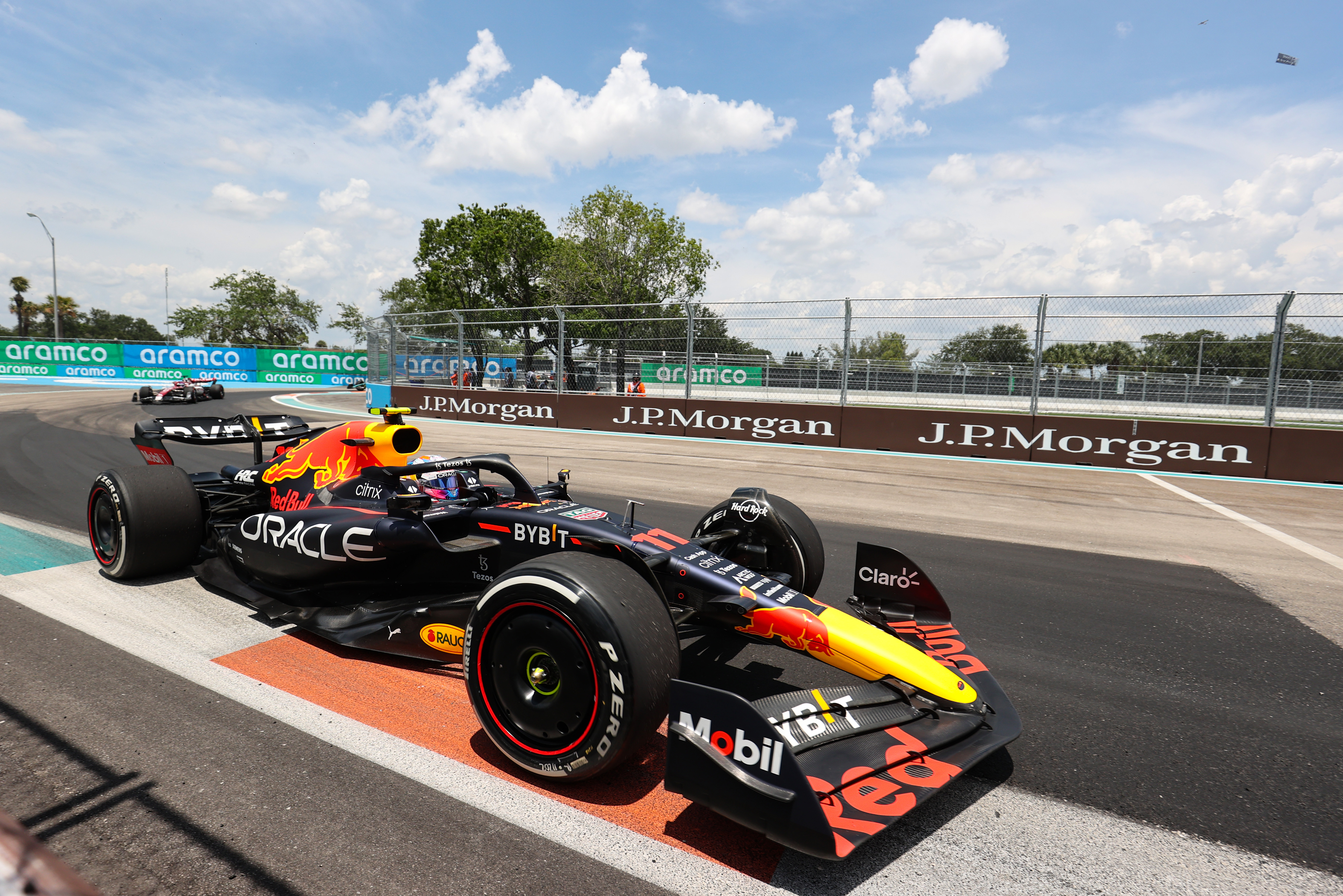
As we have heard on many occasions from every team, it is very difficult if not impossible to predict what is generating the porpoising in the windtunnel. And guess what? It’s in the windtunnel that you would go through all your different cooling options creating as efficient a cooling curve as possible to suit different ambient temperatures and average circuit speeds.
If you arrive at the circuit with cooling ‘x’ and the car is running a little cold you will simply fit cooling ‘w’. If it’s running a little hot you will fit cooling ‘x’ with no knowledge of its effect on porpoising.
So summing up, I wouldn’t be putting the size-zero sidepod concept in the bin. However, I would be looking at a different radiator inlet configuration on this sidepod to separate the underfloor inlet airflow and the radiator airflow.
This way, it would simply be another thing that means the airflow to the underfloor is more consistent. This consistency should allow you to understand the car to a better level.
The other factor is the flexing front wing that I am sure we all saw on the television footage. To develop any car, you need to know that what you think you have is what you actually have. But with the outer parts of the front wing flaps backing off as much as they are with speed, this will also alter the flow to the sidepods. The faster you go, the more it deflects.
I doubt very much if Mercedes has matched the 60% model car front wing stiffness to the 100% real car front wing stiffness. So again, it’s a changing airflow structure going around those front wheels.
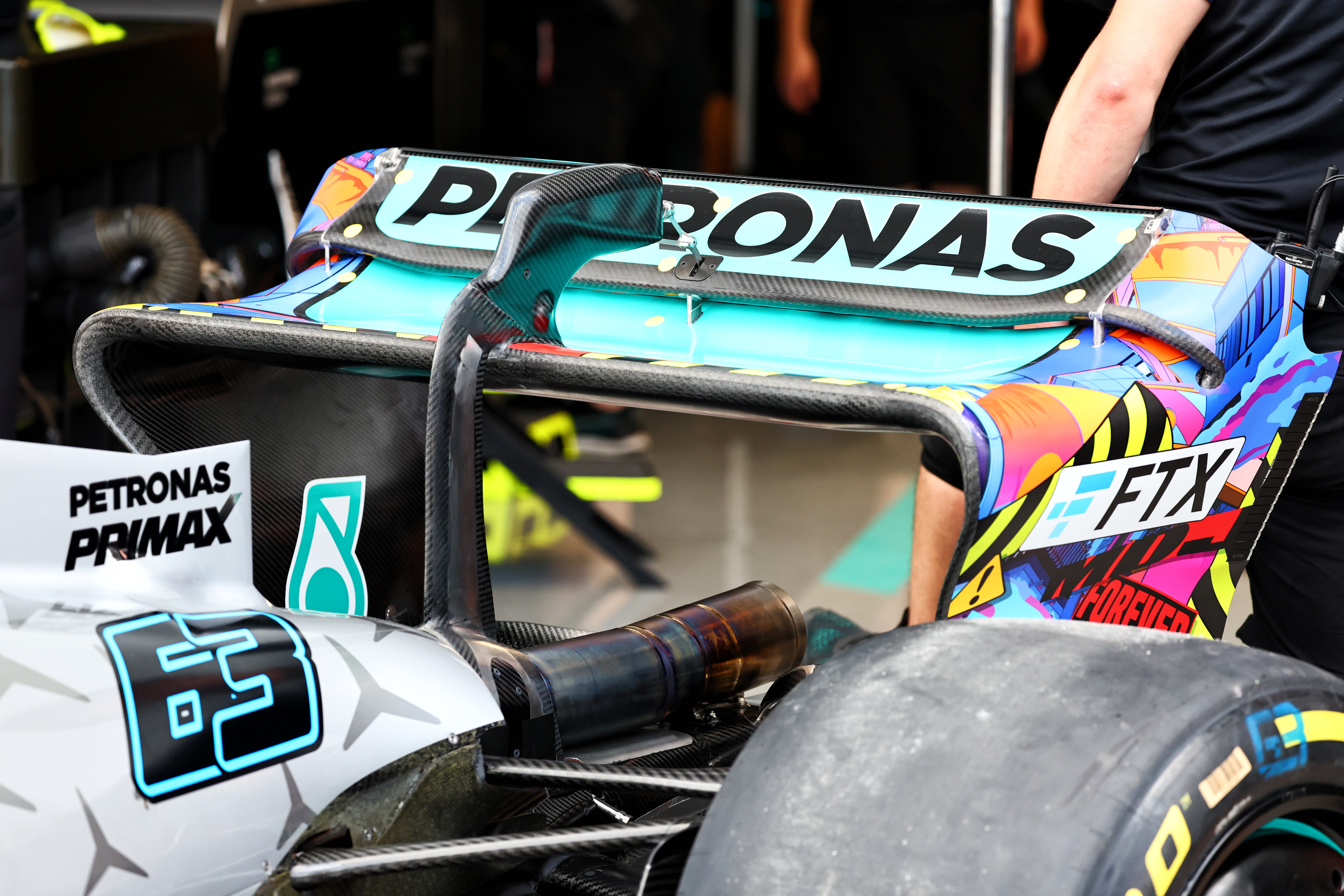
Initially, there were concerns that the large flat floor area might be causing some of the porpoising problems but by adding floor stays in critical areas they should have been able to reduce if not eliminate this problem. With CFD it should be able to generate a load profile to help it position the stays in the most critical location.
Over the last eight seasons, it has been the other teams that were playing catch up, now the shoe is on the other foot and it’s Mercedes that needs to find answers, and quickly if it is to save its season.
What happened on Friday to Saturday in Miami might just be the key that unlocks the understanding it needs to solve its problems. Or, it could just be another confusing piece of the puzzle that makes it all even harder to understand.
Either way, what happens in Barcelona in two weeks is going to be hugely significant for its prospects for the rest of the season.


